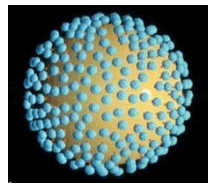 |
 |
 |
| |
Evidence That Man Cured of HIV Harbors Viral Remnants Triggers Confusion - Commentary Science Mag
|
| |
| |
by Jon Cohen on 11 June 2012, 5:51 PM
11 June 2012
Evidence That Man Cured of HIV Harbors Viral Remnants Triggers Confusion
by Jon Cohen
Sensitive tests produce disputed results
Only one person ever has been cured of an HIV infection, and a presentation about the man at a scientific meeting in Sitges, Spain, last week has caused an uproar about the possibility that he's still infected.
Timothy Brown, initially referred to as "the Berlin patient" until he went public about his cure, received unusual blood transplants 5 years ago to treat his leukemia. The blood came from a donor who had mutant cells resistant to HIV. Following the procedure, Brown stopped taking antiretrovirals (ARVs), the virus never returned, and his doctors reported that he had been cured.
But new research presented on 8 June at the International Workshop on HIV & Hepatitis Virus "challenge[s] these results," asserts Alain Lafeuillade of the General Hospital in Toulon, France, a well known HIV/AIDS cure researcher. Lafeuillade issued a press release, "The So Called HIV Cured 'Berlin' Patient Still Has Detectable HIV in His Body," that questions whether Brown was reinfected and may still be infectious to other people. Lafeuillade also posted a blog item, "The Weird Story of the Berlin Patient," raising similar questions.

Cured? Researchers are disagreeing about how to interpret sensitive tests suggesting that HIV (shown in a computer simulation, above) might still be present in man believed cured.
Credit: Richard Feldmann/U.S. National Institute of Allergy and Infectious Diseases
The scientists who conducted the new study strongly object to Lafeuillade's interpretation of their results. "We weren't trying to say HIV was still there or he hadn't been cured," says virologist Steven Yukl of the University of California, San Francisco, who gave the talk.
Yukl, who works in Joseph Wong's lab, highlighted the difficulties that they and several labs they collaborated with have had determining if Brown truly had eradicated the virus from his body. "There are some signals of the virus and we don't know if they are real or contamination, and, at this point, we can't say for sure whether there's been complete eradication of HIV," says Yukl. "The point of the presentation was to raise the question of how do we define a cure and, at this level of detection, how do we know the signal is real?"
Using sensitive polymerase chain reaction (PCR) tests to scour through 9 billion of Brown's blood cells, Yukl and two other labs have found bits of viral RNA in his plasma. Although Yukl and others who plucked out positive signals believe they are real signs of HIV, Douglas Richman of the University of California, San Diego, another collaborator, found nothing and suspects his colleagues have found contaminants. "If you do enough cycles of PCR, you can get a signal in water for pink elephants," says Richman. Another lab also found HIV antibodies in Brown, though levels were low and declining.
Tae-Wook Chun, of the National Institute of Allergy and Infectious Diseases in Bethesda, Maryland, is one of the collaborators who found positive signals for HIV, but he stresses that no one isolated virus that could copy itself, and suggests Brown may simply harbor harmless, defective genetic pieces of the virus. "We're pushing the limits of detection," says Chun. "At the end of the day it's clear to us that he has some pretty low residual viremia. I don't really know what to make out of it, other than he's controlling viral replication or he doesn't have HIV that can restart the infection. It's a difficult case to talk about."
Ideally, the researchers would have shown that the viral pieces they found matched the virus that was previously in Brown. But no such evidence exists. Chun and another collaborator, Robert Siliciano of the Johns Hopkins University School of Medicine in Baltimore, Maryland, did sequence bits of virus they recovered, but the genetic codes did not match each other-or the virus found in Brown before his transplant. Yukl notes that unlike his own studies, these experiments cloned the virus and ran repeated PCRs. "There's a huge potential for contamination," Yukl says, stressing that would not invalidate his findings of a signal.
To Lafeuillade, the mismatched sequences suggested that Brown may have cleared the virus and then become reinfected. He also wondered why Brown still had any antibodies to the virus at all. "I am just asking scientific questions that nobody seems to be able/or to want to ask," says Lafeuillade in an e-mail.
Richman, who chaired the session at the meeting that included Yukl's talk, says Lafeuillade "completely misinterpreted" a thoughtful presentation and subsequent discussion-and that it in no way challenges whether Brown is cured. "[Brown's] been off ARVs for 5 years," says Richman. "That trumps all these assays."
|
| |
|
 |
 |
|
|